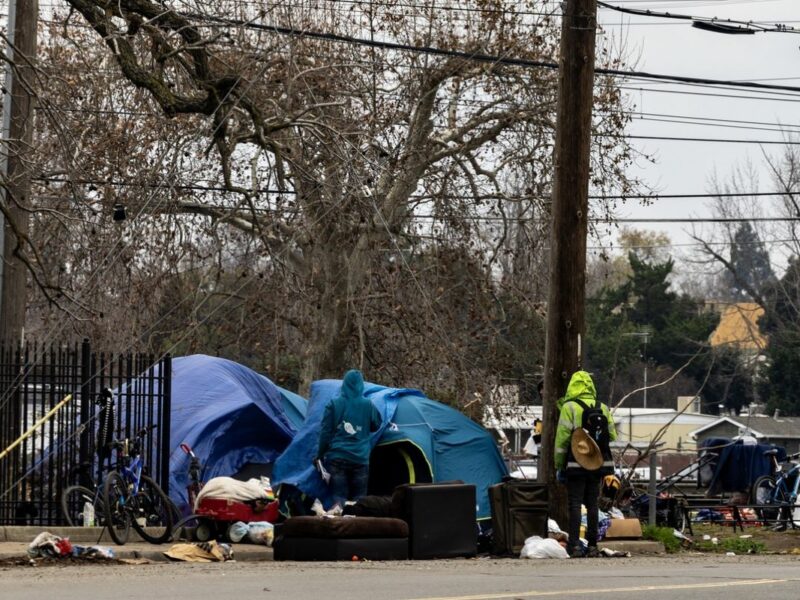In 2023, over 653,000 individuals faced homelessness, marking a 12% increase from the previous year. This rise coincided with the end of funding for pandemic-era support programs and surging housing prices, as revealed by the latest point-in-time count figures from the Department of Housing and Urban Development.
The data confirms what many advocates expected to see, given that cities ranging from Los Angeles, California, to Denver, Colorado, and New York City, New York, reported significant increases in homelessness during their local counts. The 653,000 figure is also the highest number of people counted since 2007 when nationwide reporting began.
“Homelessness is solvable and should not exist in the United States,” HUD Secretary Marcia Fudge said in a press release. “From day one, this Administration has put forth a comprehensive plan to tackle homelessness, and we’ve acted aggressively and in conjunction with our federal, state, and local partners to address this challenge. We’ve made positive strides, but there is still more work to be done.”
HUD’s point-in-time count is conducted every January by volunteers at local Continuums of Care or organizations responsible for promoting communitywide efforts to solve homelessness. The purpose of the count is to provide a snapshot of sheltered and unsheltered homelessness across the country.
However, the point-in-time count data is often incomplete. For example, 20 communities in 2023 did not submit unsheltered counts and carried their data forward from 2022. This is one reason some experts say the data does not accurately depict local homelessness cases.
Point-in-Time Count Shows a Double-Digit Increase in Homelessness Among Families, Unaccompanied Youth and Older Americans
Despite the inconsistencies, several subpopulations saw their rates of homelessness significantly increase in 2023. For instance, the number of families with children experiencing homelessness grew by 16%, or roughly 25,000 people, up to 186,084.
Unaccompanied youths, or children under the age of 25 who are experiencing homelessness without a parental figure, also increased by around 4,600 people, which represents a 15% climb year-over-year.
The report also shows a significant increase in the number of people aged 55 years or older who are experiencing homelessness, a statistic that speaks to the housing affordability issues that many older Americans are trying to navigate. Altogether, there were more than 98,000 people over the age of 55 experiencing homelessness in 2023, which accounted for nearly 20% of the overall population.
“Many factors drive homelessness, but the most significant root causes are the shortage of affordable homes and the high cost of housing that have left many living paycheck to paycheck and one crisis away from homelessness,” U.S. Interagency Council on Homelessness Director Jeff Olivet said in a statement.
Tailoring Solutions with Real-Time, Individual-Specific Data Has Led to Success in Reducing Homelessness
Despite the top-line figures, some experts say a few cities made progress toward solving homelessness in 2023. The local point-in-time count shows that Detroit, Michigan, reduced its overall homeless population by 14%. That includes a 28% reduction in households with children experiencing homelessness and a 40% decrease in the number of homeless people with substance use disorder.
Similarly, Maine reduced the number of veterans experiencing homelessness by 49%, according to local data. Overall, just 123 veterans experienced homelessness in Maine in 2023 compared to 245 survivors of domestic violence and 674 adults who have a mental illness.
To Adam Ruege, the director of strategy and innovation at the national nonprofit Community Solutions, the results in Maine and Detroit show why it’s essential for local homeless service providers to use by-name data when designing their responses to homelessness. By-name data, also known as a by-name list, is a comprehensive, real-time data source about every person experiencing homelessness in a local community.
“Communities adopting kind of this by-name data approach to actually know who and how many people are experiencing homelessness are actually seeing reductions in homelessness,” Ruege told Invisible People.
Other advocates like National Alliance to End Homelessness CEO Ann Oliva say the 2023 point-in-time count data shows that lawmakers need to put more effort into fixing the social safety net. That includes funding emergency rental assistance programs and expanding housing voucher programs to meet the scale of need.
“Homelessness impacts every community in this nation,” Oliva said. “Fortunately, there are solutions that are proven to work if they are appropriately funded,” Oliva said. “Every American deserves the safety of a stable home. Now is the time for our federal, state, and local leaders to commit to that vision.”
How You Can Help
Now is not the time to be silent about homelessness in the U.S. or anywhere else. Unhoused people deserve safe and sanitary housing just as much as those who can afford rent or mortgage.
Poverty and homelessness are both policy choices, not personal failures. That’s why we need you to contact your officials and tell them you support legislation that:
- Streamlines the development of affordable housing
- Reduces barriers for people experiencing homelessness to enter permanent housing
- Bolsters government response to homelessness
Together, we can end homelessness.











